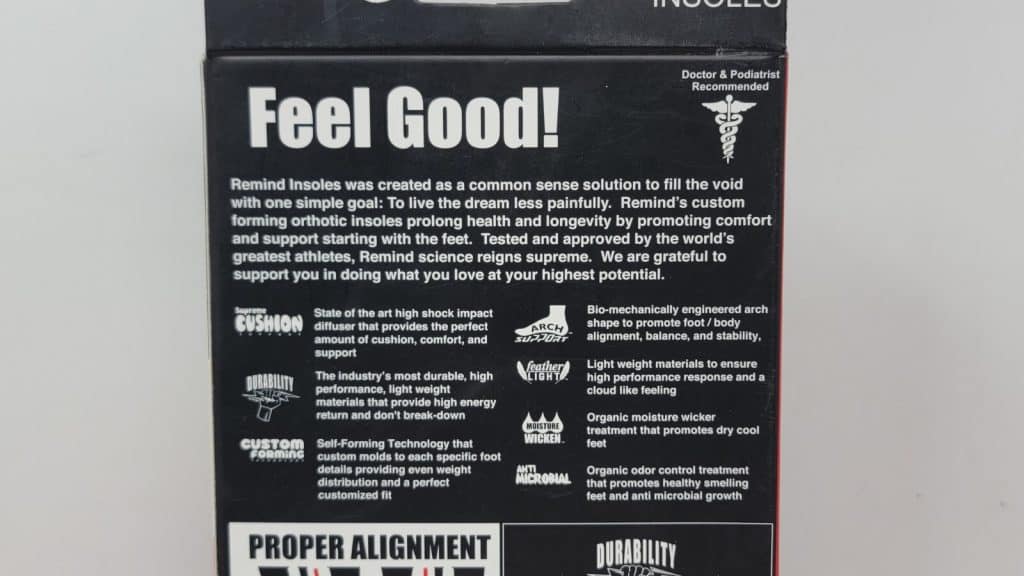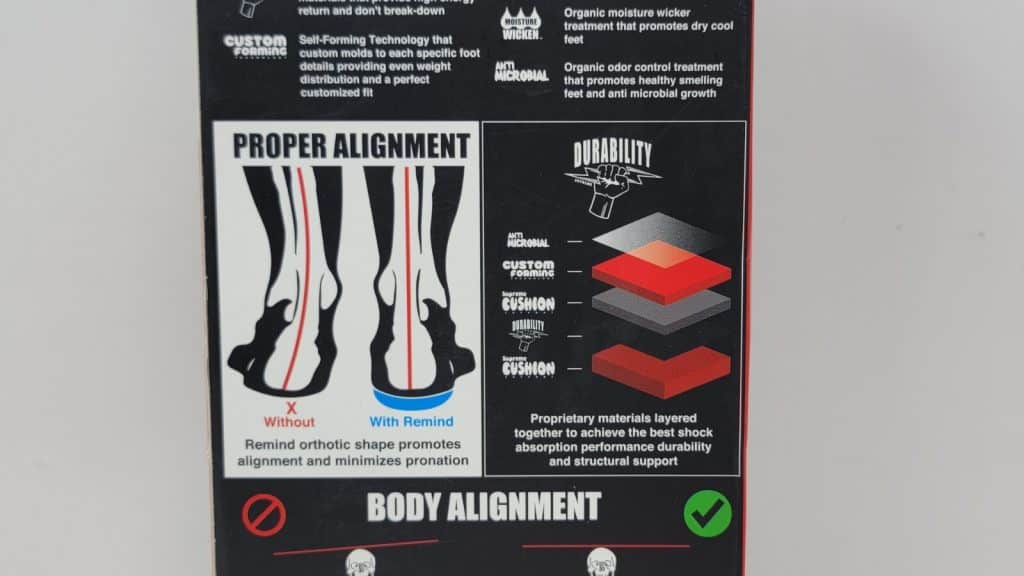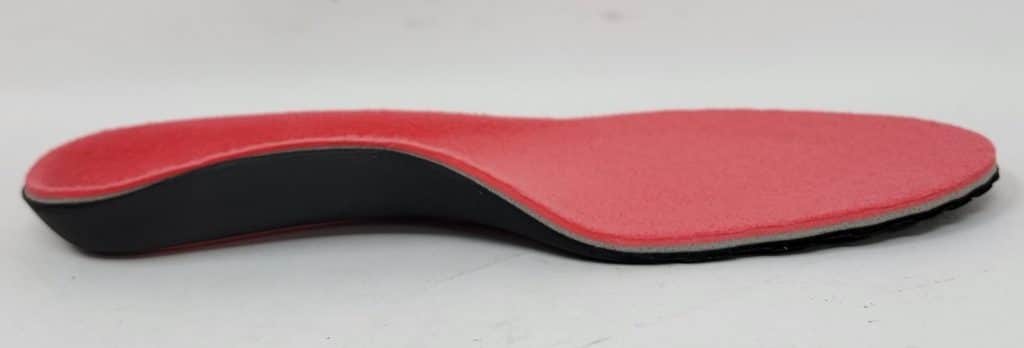I’ve gone through more insoles than I’d like to admit. I needed something that actually makes long days in ski and snowboard boots more comfortable. Most of the generic ones feel fine for about an hour, then pack out or shift around. The Remind Remedy has been the one I keep coming back to. It’s heat-moldable, has legit arch support and feels built for riding, not just walking around the grocery store.
But let’s be real — no insole is perfect. Here’s what I actually noticed after putting the Remedy through everything from powder days to icy groomers.
Summary: Remind Remedy Insole
I’ve been running these in both ski and snowboard boots. They mold to your foot, hold up over long days and give better arch support than most other insoles. Not magic, but one of the better upgrades if your boots feel flat or packed out.
- Heat-moldable for a closer fit
- Good arch and heel support
- Comfortable all day
- Works in ski and snowboard boots
- Pricey for an insole
- Can feel firm at first
Buying through our affiliate links supports the site at no extra cost to you.
Full Review
As an instructor who spends way too many days in boots each winter, my feet are pretty messed up. I tested the Remind Remedy in my thirtytwo lashed snowboard boots, DC Judge snowboard boots and my Lange ski boots to see if they actually make a difference when you’re standing, riding and teaching all day. Most of my time on them has been at Jackson Hole, mixing everything from long teaching days on groomers to chasing powder laps (when I could sneak away).
If you’ve ever felt your arches collapsing halfway through the day or that dull heel bruise after a few laps, you know why insoles matter. Here’s what stood out when I swapped the stock footbeds for the Remedy.
Remind Remedy Specs
The Remedy is built as a trim-to-fit insole with a deeper heel cup and a medium to high arch profile. The foam is layered for impact dampening, and you can heat mold them to fine-tune the fit. On paper, the idea is simple: keep your arch supported, stop your heel from sliding around and add a bit of cushion underfoot so long days don’t crush your feet. Ultimately, this is also designed to align your ankle, knee, hip and spine – allowing better riding and happier joints.


They’re designed to drop straight into ski or snowboard boots, but I’ve seen people use them in skate shoes too. At around sixty bucks they’re not cheap (except compared to custom $300 insoles), so they need to do more than just look good in a spec sheet.
1. Fit & Support
The Remedy locks your heel in better than any stock footbed I’ve used. The deeper heel cup keeps you centered and once molded, the arch feels supportive without being intrusive. If you’ve got flat feet you might find it a little aggressive at first, but for me it kept my arches from collapsing halfway through the day. In snowboard boots that meant more response edge to edge and in ski boots it just felt less sloppy.
2. Comfort on Snow
What really stood out was how much less foot fatigue I had after long teaching days. Normally I’d get that dull ache under my heel or the ball of my foot by lunchtime, but the Remedy spread the pressure more evenly. They feel firm at first, but after a couple of days they softened just enough. They don’t magically turn your boots into slippers, but they make long days a whole lot more manageable.



3. Durability
After a full season they’ve held their shape better than most insoles I’ve tried. The foam hasn’t completely packed out and the arch support hasn’t collapsed. They do get sweaty, and if you’re riding every day you’ll probably still replace them yearly – but that’s miles better than the paper-thin stock footbeds that usually come with boots.
4. Heat Molding
You can toss these in the oven or just let them mold naturally from riding. I baked mine once and it definitely helped them settle in faster. Don’t expect a full custom shop fit – which cost me $300 a few seasons back – but it’s a nice middle ground if you want something that feels a bit more dialed without spending custom prices.
5. Pros & Cons
- ✔ Heat-moldable for a cushy custom feel
- ✔ Solid arch and heel support compared to stock footbeds
- ✔ Noticeably less foot fatigue on long days
- ✔ Holds shape better than cheaper insoles
- ✔ Works well in both ski and snowboard boots
- ✖ Pricey compared to generic insoles
- ✖ Feels firm out of the box — takes a few days to break in
Who They’re For
If your stock footbeds leave your feet sore, or you just want more arch support without going full custom, the Remedy is a solid upgrade. They’re best for skiers and snowboarders who spend long days in boots and notice their feet fatiguing after a few hours. If you’re only out for a couple weekends a year, they’re probably overkill, but if you live in your boots, they’re well worth it.
Who They're NOT For
If you only ride a couple weekends a season, these are probably overkill… your stock footbeds or a cheaper ski or snowboard insole will do just fine. Same if you’ve got very flat feet and need serious orthopedic-level support, or if you’re chasing a full custom shop fit. The Remedy hits a sweet spot for most everyday riders, but they’re not the magic bullet for every foot type.
Final Thoughts
The Remedy isn’t the cheapest insole out there, but it’s one of the few that actually makes a noticeable difference in both ski and snowboard boots. The heat molding, the deeper heel cup and the arch support all add up to less foot fatigue and a more locked-in feel. If you’re spending long days on snow, they’re a smart upgrade. If you’re a casual weekend rider, you can probably skip them.
Remind Remedy FAQ
Yes — I’ve used them in both ski and snowboard boots. The heat-moldable arch and deeper heel cup give more support than the stock liners. There’s also research showing insoles can improve stability and reduce injuries (source).
No, they’ll mold to your foot naturally over a few days of riding. Heat molding just speeds that up and gets them dialed quicker. I baked mine once and it was worth it.
Mine held shape through a full season of teaching and riding almost daily. If you ski or ride hard all winter, expect about a year of solid life before they lose some support.
At around sixty bucks, they’re not cheap. But compared to sore feet, heel bruises, or having to buy custom orthotics, it’s a small price for more comfort and support.

